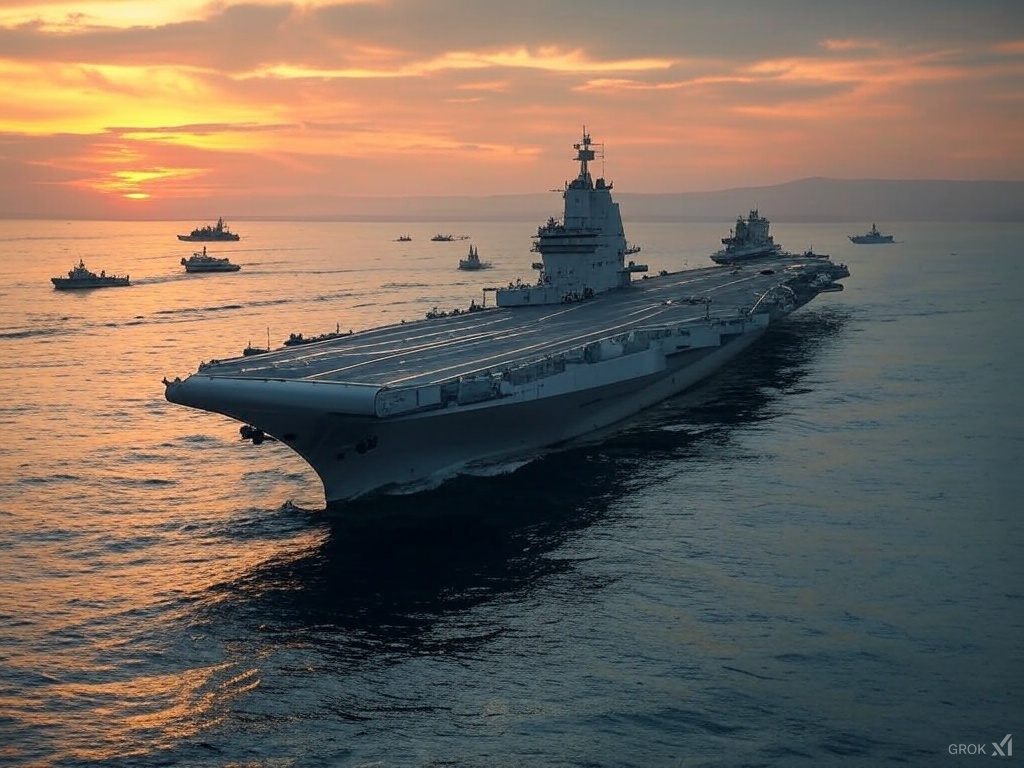
Beijing’s expansive military ambitions collide with emerging tech trends, reshaping strategic landscapes for BRICS and global defense alliances.
In an era defined by rapid technological disruption, China’s dramatic pivot to global power projection is rewriting the rules of modern warfare—and not without steep costs. Over the past 15 years, Beijing has reallocated vast resources to transform its armed forces, cultivating a blue-water navy equipped with three aircraft carriers, a growing fleet of amphibious assault ships, and its first overseas military base in Djibouti in 2017. This aggressive expansion, underscored by port visits from Cambodia to Sri Lanka, signals Beijing’s fervent belief in its destiny as a world power. Yet, as emerging technologies favor smaller, more expendable systems like drones and precision missiles, one must ask: Is China’s grand strategy doomed to collapse under its own weight?
Evolving Military Ambitions in a Tech-Driven Era
China’s shift from a primarily defensive posture—focused on deterring territorial encroachments through long-range missiles and stationary defenses—to a robust power projection model marks a decisive break from tradition. Chinese officials, emboldened by rapid economic growth and a reinvigorated national pride, now invest heavily in an expensive global military presence. However, as history and recent conflicts like the war in Ukraine reveal, technological innovation is rewriting the playbook of modern combat. The deployment of low-cost, high-efficiency systems challenges the utility of costly platforms such as aircraft carriers, suggesting that China’s ambitions may be misaligned with the evolving realities of warfare.
Political Impacts: Strategic Shifts and Global Repercussions
Politically, China’s pursuit of overseas power projection has profound implications not only for its own strategic posture but also for the wider BRICS community and global alliances. As Beijing recalibrates its military strategy to embrace expansive, high-profile operations, traditional defensive doctrines are giving way to a more assertive posture reminiscent of historic great powers. This realignment fuels apprehension among U.S. policymakers and has prompted calls for a rebalanced defense strategy—one that integrates agile, cost-effective systems alongside legacy power assets. The ripple effects are felt across BRICS, where nations increasingly grapple with the dual challenge of fostering national security while maintaining economic stability in an unpredictable global order.
Economic Impacts: High Costs and Shifting Investment Priorities
Economically, the pivot towards power projection poses significant challenges. The enormous financial burden of sustaining a blue-water navy and overseas bases comes at a time when technological advances favor uncrewed, disposable systems. Defense budgets, already under strain, must now contend with the dual pressures of modernizing legacy systems while investing in emergent, agile technologies. This dynamic is catalyzing a shift in the defense industrial base, with companies like Lockheed Martin, Northrop Grumman, and emerging tech innovators facing both opportunities and risks. As military spending priorities shift, the economic calculus for both state and private defense sectors is undergoing a fundamental transformation that could redefine the strategic balance within and beyond the BRICS framework.
Comparative Global Strategies: BRICS vs. G7
While China and its BRICS partners navigate these turbulent waters, the G7 nations are recalibrating their defense strategies by embracing a blend of traditional power projection and cost-effective, modernized systems. Unlike China’s high-cost approach, G7 policies increasingly favor a diversified force structure that leverages drones, missile systems, and stealth technologies to ensure rapid adaptability in conflict scenarios. This contrast not only highlights the divergent strategic philosophies but also underscores the broader implications for global security as the race to modernize military capabilities intensifies.
Quick Insights
- China’s ambitious shift to global power projection involves costly assets like aircraft carriers and overseas bases.
- Emerging technologies favor low-cost, expendable systems over traditional, expensive platforms.
- Political and economic reverberations extend across the BRICS community and beyond.
- U.S. and G7 defense strategies are pivoting towards a balanced mix of legacy and innovative capabilities.
What’s Next?
Looking forward, China’s heavy investment in high-stakes military assets may well prove a double-edged sword. As adversaries adopt agile, technology-driven strategies, Beijing might find its traditional power projection models increasingly vulnerable to disruption. For BRICS nations and global policymakers alike, the coming years will demand a delicate recalibration of defense spending, technological investment, and strategic alliances. The unfolding evolution of military capabilities promises not only to redefine regional power balances but also to challenge longstanding assumptions about the cost-effectiveness of modern warfare.
Regional Spotlight: Implications for BRICS Neighbors
Within the BRICS bloc, the ripple effects of China’s strategy are being closely monitored by nations such as India and Brazil. India, already engaged in a strategic rivalry in the Indo-Pacific, is reassessing its defense posture in light of China’s rapid military modernization. Meanwhile, Brazil and South Africa are balancing their developmental objectives with a cautious recalibration of their security policies. This regional dynamism highlights the need for nuanced, context-specific strategies that address both the promise and the peril of China’s military ambitions.



